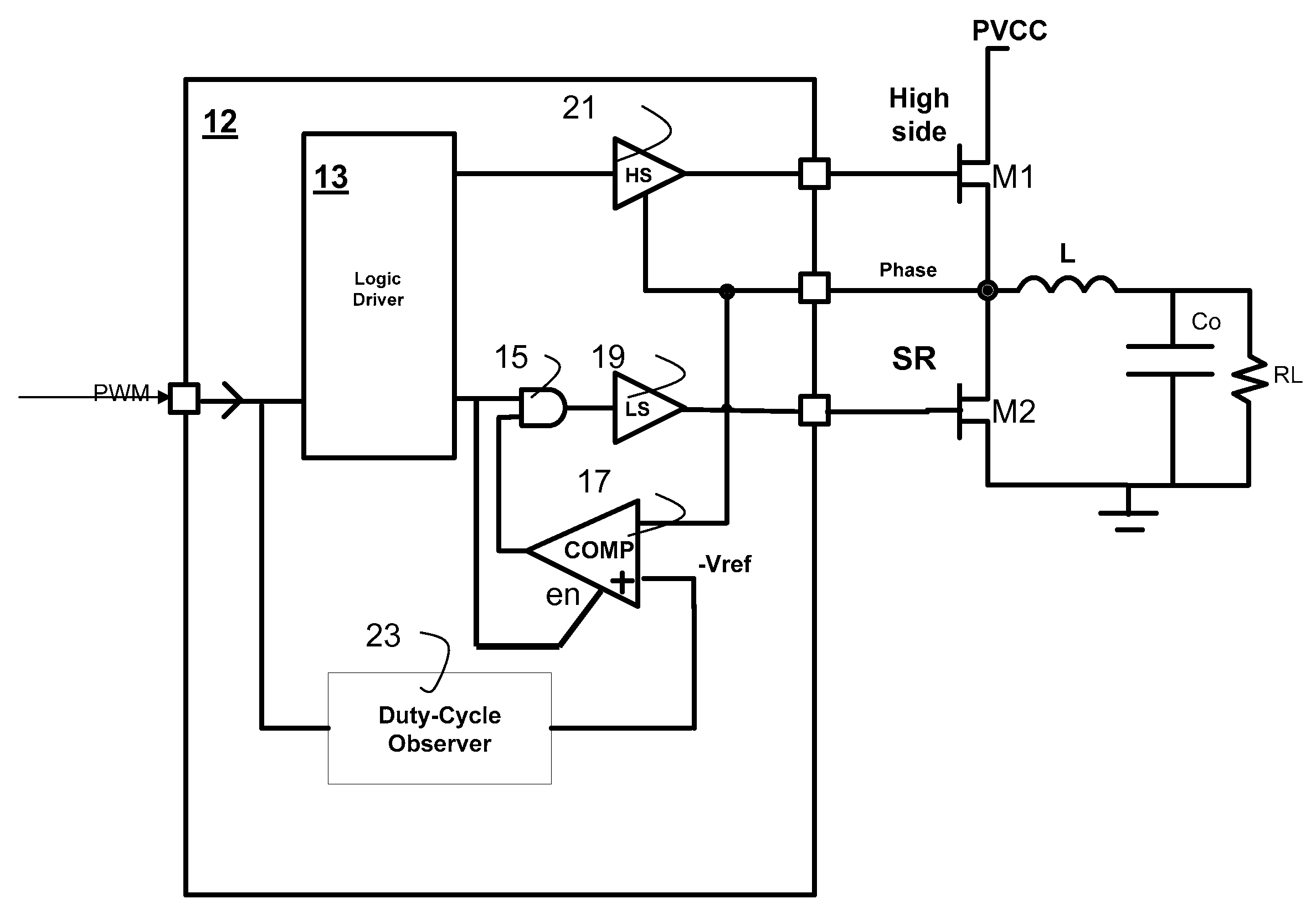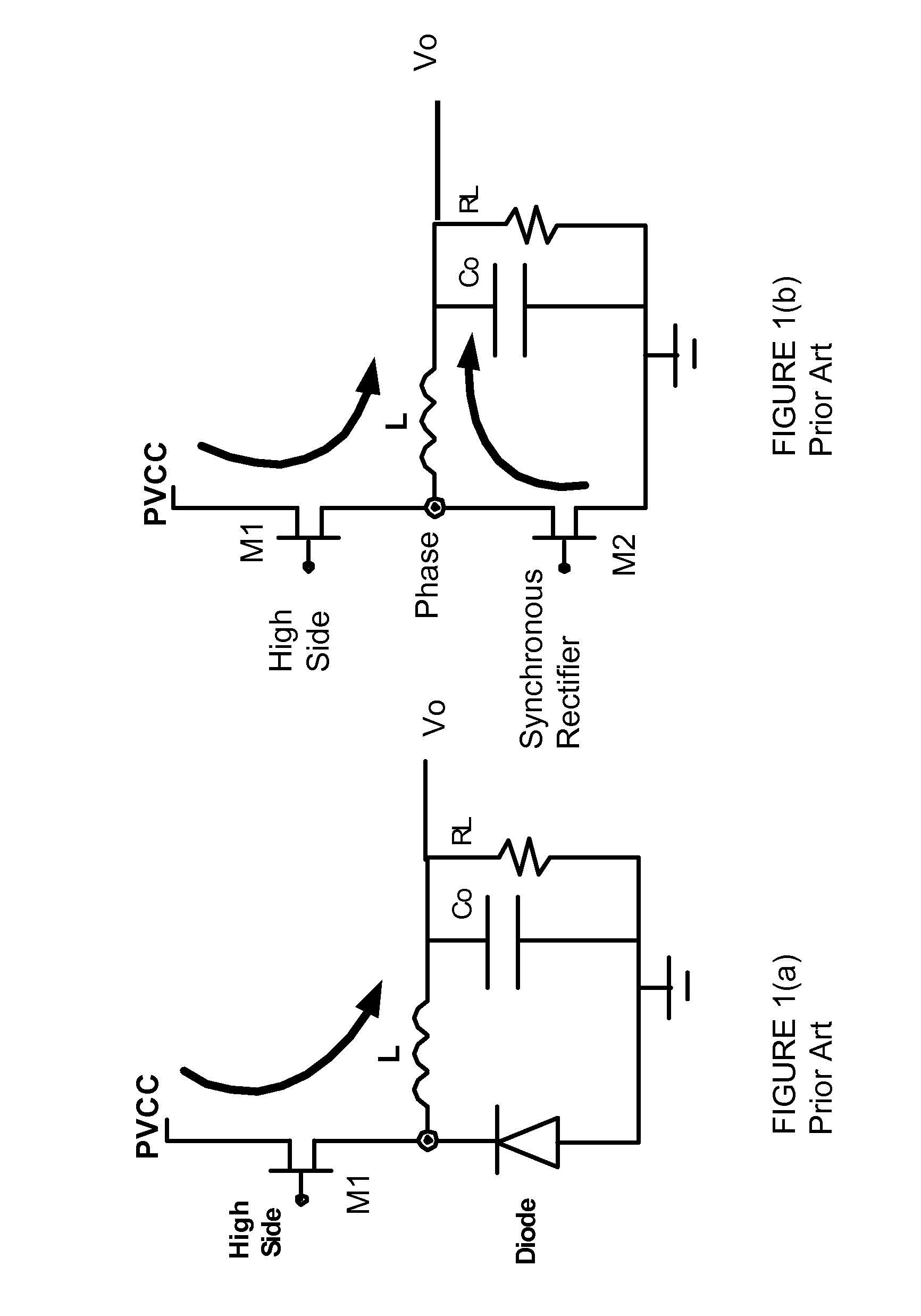Discontinuous Conduction Mode Control Circuit and Method for Synchronous Converter
a control circuit and synchronous converter technology, applied in the direction of dc-dc conversion, power conversion systems, instruments, etc., can solve the problems of inefficiency, inability to meet the requirements of light load conditions, and still present problems with synchronous buck converters and efficiency, etc., to achieve efficient and reliable, enhance the efficiency of converter operations, and increase the efficiency of the converter in dcm
- Summary
- Abstract
- Description
- Claims
- Application Information
AI Technical Summary
Benefits of technology
Problems solved by technology
Method used
Image
Examples
Embodiment Construction
[0050]The making and using of the presently preferred embodiments are discussed in detail below. It should be appreciated, however, that the present invention provides many applicable inventive concepts that can be embodied in a wide variety of specific contexts. The specific embodiments discussed are merely illustrative of specific ways to make and use the invention, and do not limit the scope of the invention.
[0051]The present invention will now be described with respect to preferred embodiments in an illustrative, non-limiting, specific context, namely the DCM operation mode for a synchronous buck switching power converter. The invention may also be applied, however, to other circuits where a zero crossing detection is used, such as a boost, or buck-boost, a synchronous rectifier and the like that is used with a coil or inductor. In these exemplary circuit embodiments, a zero crossing detection may be used to control the switching of one or more drivers when the circuit is operat...
PUM
 Login to View More
Login to View More Abstract
Description
Claims
Application Information
 Login to View More
Login to View More - R&D
- Intellectual Property
- Life Sciences
- Materials
- Tech Scout
- Unparalleled Data Quality
- Higher Quality Content
- 60% Fewer Hallucinations
Browse by: Latest US Patents, China's latest patents, Technical Efficacy Thesaurus, Application Domain, Technology Topic, Popular Technical Reports.
© 2025 PatSnap. All rights reserved.Legal|Privacy policy|Modern Slavery Act Transparency Statement|Sitemap|About US| Contact US: help@patsnap.com



